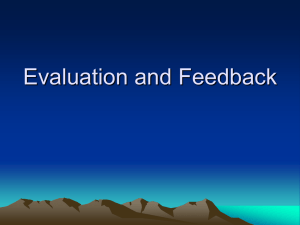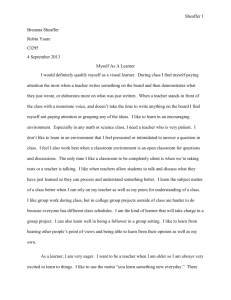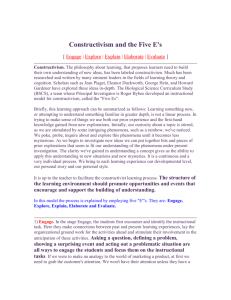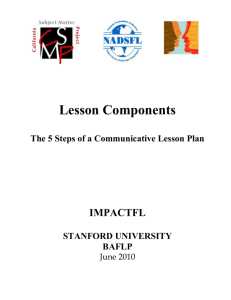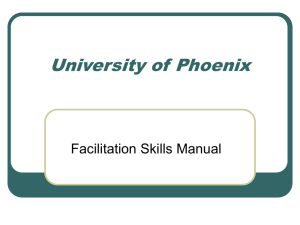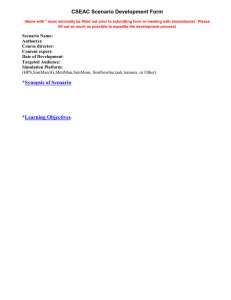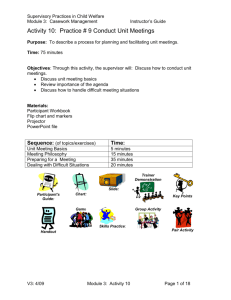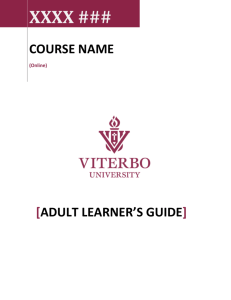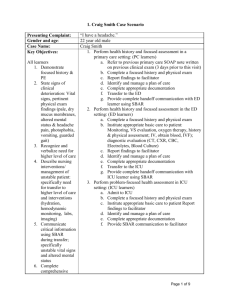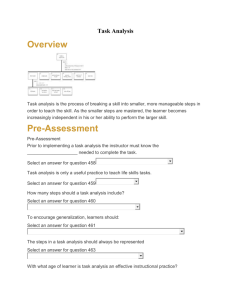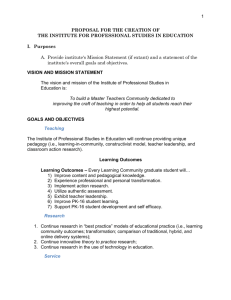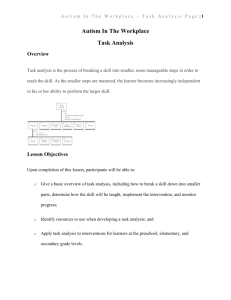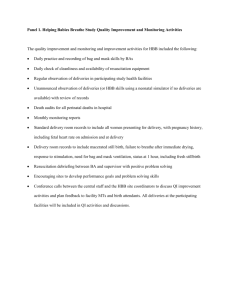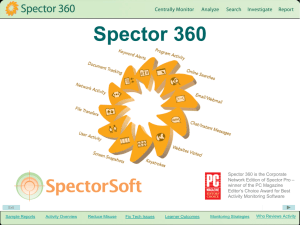The Learning Process
advertisement
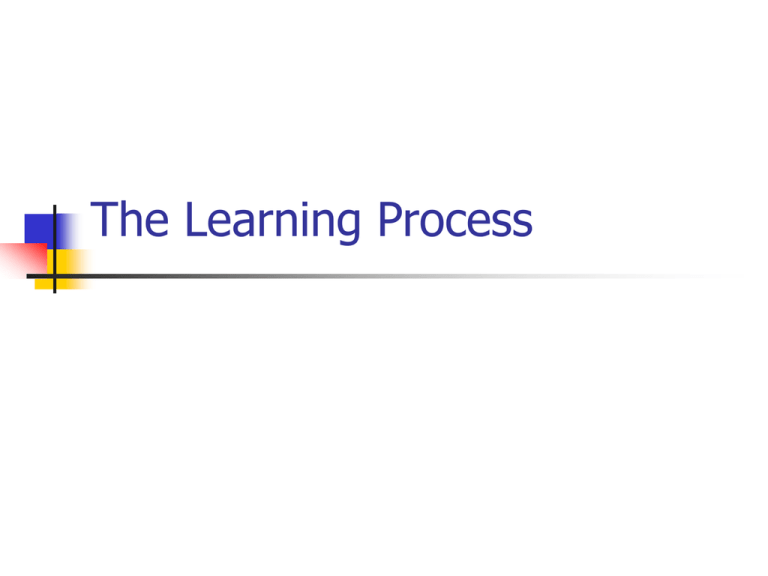
The Learning Process Learning – relatively permanent change in behavior Learning 83 % - See 11% - Hear 3% - Smell 2% - Touch 1% - Taste Retention 10% - Read 20% - Hear 30% - See 50% - See/Hear 70% - Discuss 80% - See/Hear/Do Basic Principles of Learning: Learning is continuous Learning is purposeful & must make sense to the learner Learning involves as many senses as possible Learning activities must be appropriate for the situation Basic Principles of Learning: Learning must be stimulating Learning must result in the ability to perform Learning is affected by emotions Learning is affected by the physical and social environment Teaching/Instructing: Success depends upon: Objectives for the Course Resources Available Characteristics of Participants Learning Environment Instructor(s) Who’s Responsible ? Elements of Instructional Situation Learning Objective Learner Teacher Objectives Written in behavioral terms Outlined to participants clearly and specifically Types of Objectives – Cognitive (Knowledge) Tell what information the learner must know and describe how the knowledge will be demonstrated. Require giving information to the learner. Types of Objectives – Psychomotor (skill) Tell what physical skills the learner will be able to perform. Best learned in practice sessions as they require neuromuscular coordination. Whole – Part - Whole Types of Objectives – Affective (feelings) Clarify feelings and attitudes of the learner The most difficult to impart & evaluate A patient, confident, friendly, empathetic teacher can help learners feel comfortable and confident. Why do you want to know if the objectives are being met? How can you determine if the objectives are being met? Evaluation USE Determine readiness for new material Estimate progress Judge effectiveness Provide motivation/ feedback Provide a record MISUSE Threaten students Classify students Misuse results Use for instructional design Learner Motivation Past learning experience Intrinsic Extrinsic Length away from Positive or Negative Needs Learning Styles Concrete Experience Active Reflective Experimentation Observation Abstract Conceptualization Instructor/Facilitator Most important element to the learning experience Provides guidance, support, and structure to the learning experience Characteristics of a good Instructor/Facilitator: Knowledge of the subject matter Facilitator of learner participation Ability to serve as a model Ability to provide effective feedback Ability to perform effective evaluation Ability to administer & manage the course The Good Speaker Maintains Student Contact Controls Nervousness Avoids Distracting Mannerisms Shows Enthusiasm Develops Good Voice Quality Avoids Excuses Practices before Presents Are you maintaining contact? Get the attention of the class first Look at and talk to your students Speak in a conversational tone of voice Pay close attention to student response Be Alert!! Look Alert!! Controling Nervousness Be thoroughly prepared Assume the proper mental attitude Have initial remarks will in mind Review previous instruction Tell a story or anecdote Show down – Be deliberate Advise to Instructors DO Take job seriously Observe others Develop relationships Prepare your lesson Practice your delivery Don’t Bluff Use profanity Ridicule students Talk down to class Lose your patients Methods of Presentation Present Material in small, learnable steps Require maximum student participation Present material in logical sequence Design “work” to insure successful response Methods of Presentation Correct student errors ‘on-the-spot’ Maintain control of student learning






